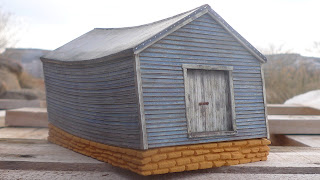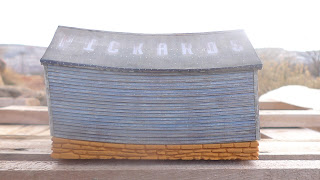This weekend saw my return to the Virgin Church. As 2012 comes to a close, I have been rolling back over older projects to see if I can get the decks cleared for a few new things. Not starting anything new until a few things are finished is good motivation for me: I have so many new ideas that I am chomping at the bit to try.
The steeple is composed of stacked illustration board, four basswood posts, and a folded piece of poster board. The scored and folded roof worked a lot better than I thought it would.
Once I managed to get the guts of the steeple together (it still needs siding), I turned my attention to the bell. While I could turn the bell on the jeweler's lathe in a few minutes, I decided that I would make the bell itself using rapid prototyping, mainly as a learning exercise (I can always go back to the lathe!). The bell cradle and the wheel for the rope will be laser cut and stacked, as I don't want to make my prototyping exercise too complicated. I figure if I get through that, I will be able to take on some of the other challenges I am interested in.
I began by tracing an image of a bell in the Wikimedia Commons. It's hard to see my lines, but I simply imported the image into my cad program and traced it. After smoothing the curves I had something that I will be able to revolve into a 3d model.
Shown in scale, the bell is really very small. That said, I think the detail in the belfry will be plainly visible, as it will be one of the higher structures. It will be interesting to see how my big fingers contend with this one. Before closing out the files on the church, I went cut and assembled a core. The openings are over sized for the windows to allow space for glazing and the other artifices of model building.
I'm going to take some time in the coming month to clean up the labels on the blog in order to make it easier to pull up entire projects. You may have to scroll back a bit to find the last installment that focused on the siding for this building.



























